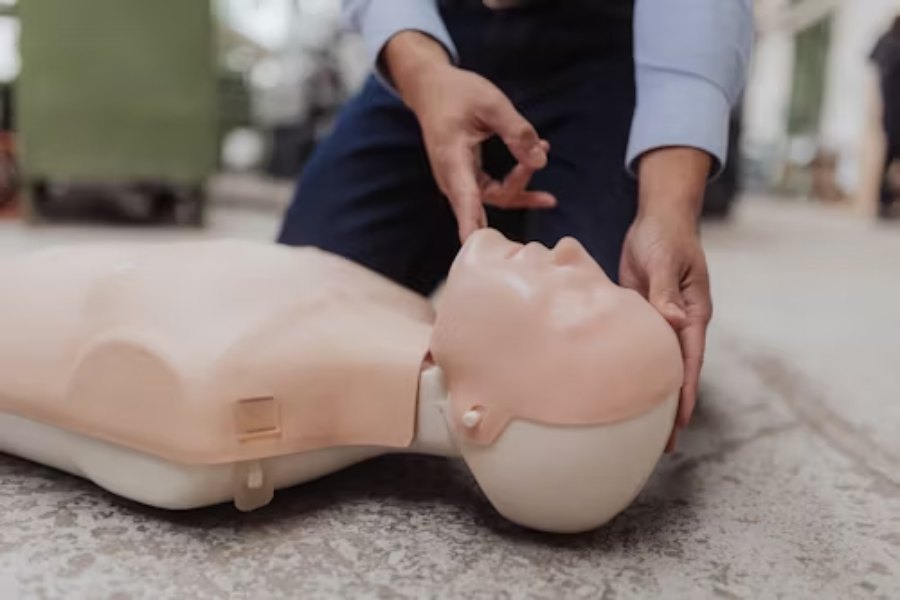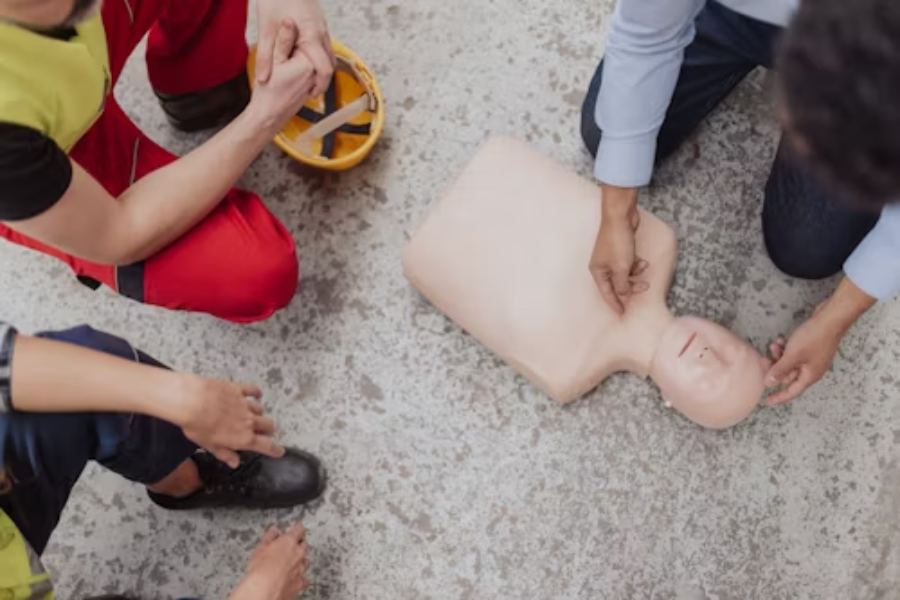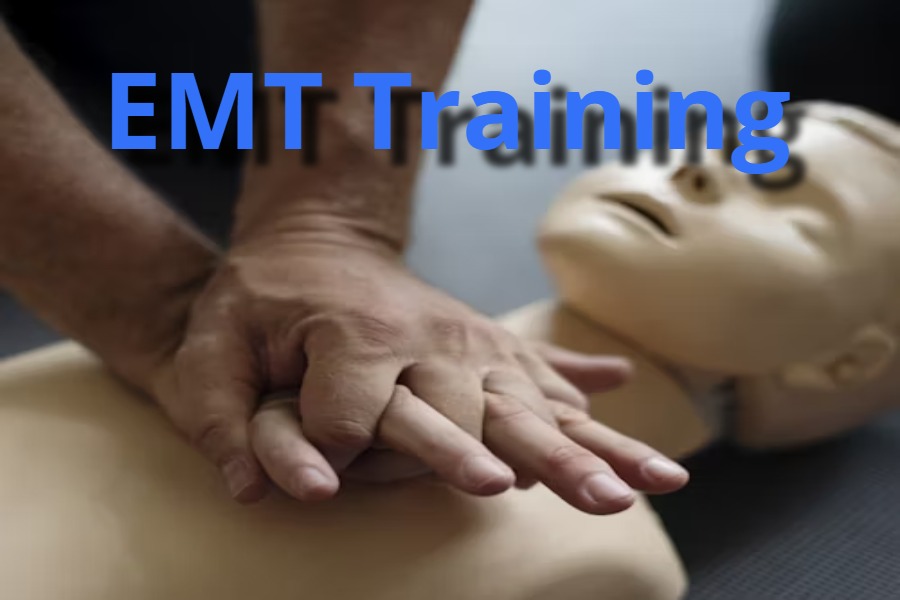Emergency Medical Technicians (EMTs) play a crucial role in the healthcare system, providing immediate care in emergency situations. Whether responding to car accidents, heart attacks, or other life-threatening conditions, EMTs are often the first responders to medical crises.
This guide offers a comprehensive look at EMT training, including its requirements, the skills you will learn, and how to begin your career in this essential healthcare field.
What is EMT Training?
EMT training equips individuals with the skills and knowledge required to provide emergency medical care. The training focuses on patient assessment, trauma care, CPR, basic life support (BLS), and the management of medical emergencies. EMTs often work in ambulances, hospitals, or fire departments, providing rapid, life-saving care.
EMT programs are typically offered by community colleges, vocational schools, and some universities. These programs vary in length, but most require several months of coursework, followed by a clinical rotation where students can gain hands-on experience. EMTs must also pass a certification exam to begin working in the field.
Types of EMT Training Programs
EMT training comes in different levels, depending on the scope of practice and skillset you wish to acquire. The main types are:

- EMT-Basic (EMT-B): This is the entry-level certification, which focuses on basic life-saving skills such as CPR, patient assessments, and basic trauma care. EMT-B training typically takes 6 months to complete.
- EMT-Intermediate (EMT-I): This is a more advanced level of training, which may include skills such as administering certain medications and advanced airway management. EMT-I programs can last anywhere from 1 to 2 years.
- Paramedic Training: While paramedics are not strictly EMTs, they are a higher level of certification that includes more advanced skills. Paramedic training focuses on advanced life support, including advanced airway management, medication administration, and invasive procedures. Paramedic programs generally last 1 to 2 years.
The majority of people interested in becoming EMTs start with the EMT-Basic certification and may choose to pursue more advanced certifications over time.
What Does EMT Training Involve?
EMT training covers a wide range of skills that will prepare you for emergencies. Key areas of training include:
- Patient Assessment: EMTs are trained to assess a patient’s medical history, take vital signs, and perform physical examinations to determine the severity of the condition. This skill is critical in identifying immediate needs and prioritizing care.
- Trauma Care: Training will teach you how to handle injuries, such as broken bones, cuts, and burns, to prevent further harm while transporting the patient to a medical facility.
- Cardiac Emergencies: EMTs often respond to heart attacks and other cardiac emergencies. You’ll learn how to identify symptoms and administer treatments such as CPR or AED.
- Airway Management: Learning to clear airways and manage breathing is a vital skill. You’ll also be trained on advanced airway management techniques.
- Medical Emergencies: These can include conditions such as diabetic emergencies, strokes, and respiratory issues. EMT training prepares you to recognize symptoms and provide appropriate treatment.
- CPR and Basic Life Support (BLS): A significant part of EMT training involves mastering CPR and BLS techniques to sustain life during emergencies.
- Field Experience: Most EMT programs require clinical rotations, where you will work in real-life emergency settings, such as ambulance rides and hospital emergency rooms.
Certification and Licensing Requirements
After completing your EMT training, you’ll need to pass a certification exam to begin working in the field. The certification process typically involves:
- National Registry of Emergency Medical Technicians (NREMT) Exam: Most states require EMTs to pass the NREMT exam. This exam tests your knowledge and skills in areas like patient care, trauma management, and medical emergencies.
- State Licensure: While the NREMT exam is recognized in many states, each state has its licensing requirements. It’s important to check with your state’s licensing board to ensure you meet the local requirements.
EMTs are also required to maintain certification through continuing education courses and periodic re-certification exams.
How to Choose the Right EMT Program
When selecting an EMT program, consider these key factors:
- Accreditation: Choose a program that is accredited by the Commission on Accreditation of Allied Health Education Programs (CAAHEP). This ensures that the program meets national educational standards.
- Location and Flexibility: Look for a program that fits your schedule. Some programs offer evening or weekend classes for those with other commitments.
- Clinical Rotations: A good EMT program will include clinical training, providing you with hands-on experience in real-world emergency situations.
- Cost and Financial Aid: EMT programs vary in cost, but many are affordable, and financial aid may be available. Be sure to check with the school for details on tuition, scholarships, and financial aid options.
Advantages of Becoming an EMT
- Job Security: EMTs are in high demand across the United States, particularly in urban and rural areas where emergency medical services (EMS) are critical.
- Good Pay: While EMTs start with entry-level salaries, the pay increases as you gain experience. Paramedics and advanced-level EMTs can earn significantly more.
- Career Growth: EMT training is the foundation for advanced healthcare careers. With additional certifications and training, EMTs can transition into roles such as paramedics, emergency room technicians, or even physicians and nurses.
- Rewarding Work: EMTs save lives daily. Helping people during their most vulnerable moments is a fulfilling and rewarding aspect of the job.
- Flexibility: EMTs work in various settings, including ambulances, hospitals, and even specialized units such as search and rescue teams. There are many options to specialize in specific areas of emergency care.
Key Skills Needed for EMTs
To succeed in EMT training and in the field, you should possess several key skills:
- Physical Stamina: EMTs often need to lift patients, move equipment, and work long shifts. Physical fitness is important for performing these tasks efficiently.
- Communication Skills: EMTs must communicate clearly with patients, their families, and healthcare providers. Clear communication can make a difference in emergency situations.
- Quick Decision-Making: EMTs often face high-pressure situations that require quick, decisive action. Good judgment and the ability to think under stress are essential.
- Attention to Detail: In emergencies, every detail matters. EMTs must be able to quickly assess a situation and identify the necessary steps for care.
- Empathy and Compassion: EMTs often encounter individuals in pain or distress. Having compassion for patients can help you provide the best care possible.
The Future of EMTs
The demand for EMTs continues to grow, driven by increasing healthcare needs and an aging population. In the coming years, the U.S. Bureau of Labor Statistics projects a steady increase in EMT employment, making it a promising career path.

Technological advancements are also influencing the field. New tools, mobile apps, and communication devices are making it easier for EMTs to provide care more effectively and efficiently. With advancements in telemedicine, EMTs may soon collaborate more frequently with healthcare professionals in real-time during emergencies, improving patient outcomes.
Advancing Your Career: Further Training and Specializations
Once you have completed your initial EMT training, several pathways exist to further specialize and advance in the field. Many EMTs choose to continue their education and gain more expertise by pursuing advanced certifications or transitioning into specialized areas of emergency medical care.
- Advanced Cardiac Life Support (ACLS): This is a common certification for EMTs and paramedics who want to further their knowledge in treating cardiac emergencies. ACLS training focuses on advanced techniques for managing life-threatening heart conditions such as arrhythmias and heart attacks. This certification is highly valued in hospitals, particularly in intensive care units and emergency departments.
- Pediatric Advanced Life Support (PALS): PALS is an advanced training course aimed at EMTs and paramedics who want to specialize in pediatric emergency care. The course teaches techniques for managing life-threatening medical and trauma emergencies in children and infants. It’s especially beneficial for EMTs working in pediatric care units or ambulances serving communities with large numbers of young families.
- Critical Care Transport (CCT): For EMTs seeking to work in specialized transport teams, CCT offers advanced training in critical patient transport, focusing on higher acuity cases that require continuous monitoring and intervention during transportation. This training is beneficial for those aiming to work in air ambulances or with critical care transport teams.
- Emergency Medical Technician – Paramedic (EMT-P): As mentioned earlier, becoming a paramedic involves more advanced training than the basic EMT certification. Paramedic training includes complex medical skills such as intravenous therapy, advanced airway management, pharmacology, and advanced cardiac life support. Paramedics can administer medication and perform invasive procedures, which greatly expands their scope of practice.
- Leadership Roles and Teaching: Experienced EMTs can also pursue careers as trainers or leaders within their organizations. EMT instructors teach future generations of emergency medical technicians, while those with leadership aspirations may manage EMS teams, oversee training programs, or work in emergency management. These roles provide opportunities to mentor others and contribute to the development of the field.
Conclusion
EMT training is a vital first step toward a rewarding career in emergency medical services. The skills you will acquire, from patient assessment to trauma care, will prepare you to handle a wide range of emergency situations. Whether you’re saving lives on the streets or in an emergency room, the role of an EMT is both challenging and incredibly rewarding. By choosing the right training program and obtaining your certification, you can start making a difference in your community today.

